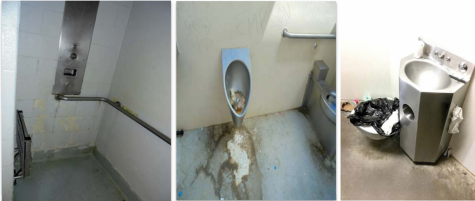Increasing immigration to the U.S. from Central American countries can fix the U.S. border crisis
October 22, 2019

This past summer, reports have come out describing the inhumane conditions at the U.S.-Mexico border. Not only were over 1,000 children separated from their parents at the border, nothing is being done to stop the practice, and those who separated are likely never to see their parents again. Reports have come out that the conditions inside the detention facilities are dangerously unhealthy for children. Contrary to the vice president’s assertion that the families were “well cared for” in the facilities, inmates “have no access to showers and are held in standing-room-only conditions for a week”. In addition, bathrooms “are moldy, toilets access is limited, and the food is spoiled”. For children, conditions are even worse. They are held for weeks at a time without regular access to showers, clean clothes, toothbrushes or proper beds.
This inhumane practice was done as a deterrent for families crossing the border, on the premise that making the country as dangerous to migrants as possible would deter immigrants from wanting to come here. Family separation is the logical conclusion to a generations-long, anti-immigrant mentality. When immigrants are seen as criminals rather than ordinary people, it opens the doors for these kind of human rights abuses.
The only way the U.S. can right the wrongs committed at the border is by establishing open borders. There are numerous reasons why this idea is not as radical as it is made out to be.
Proponents of legal immigration often say that immigrants should come in “the right way”. However, entering the U.S. “the right way” has become increasingly difficult. For one, there are strict quotas on how many people can enter from a particular country. According to the Pew Research Center, “a single country can account for no more than 7% of all green cards issued annually.” The problem with this is that it doesn’t account for vast disparities in populations. For example, immigrants from high-population countries like China or India are put at a disadvantage compared to low-population countries like Norway or Greenland. The US is still processing applications from as far back as 1997. In addition to the quota, there are four ways to enter: through family sponsorship, an employment visa, a diversity visa or by being a refugee.
Family sponsorship is the method most commonly used. Opponents of family sponsorship say that it allows shady people to enter based on the fact that they are loosely related to a resident or citizen of the United States. Under current immigration law, only close relatives (husband/wife, child, sibling, parent) can be sponsored. Furthermore, those who do get sponsored have to pass rigorous background checks, so suspicious people are weeded out. This process can take up to 22 years.
To enter the country via an employment visa, one must be a religious worker (R1), an athlete (P1), a farm worker (H-2A), or a person with extraordinary abilities (EB-1). It is important to note that work visas are only temporary. They must be renewed yearly, and are almost impossible to convert into a more permanent green card. Furthermore, only 140,000 such visas are granted annually, meaning that the US misses out on opportunities to boost its economic growth.
The third group of people entering the United States consists of refugees and asylum seekers. Even though the US accepts more refugees than any other country annually (Migration Policy Institute), the Trump White House is planning to cut the number entering the United States to 0. The limiting of legal ways to come in undermines the argument that immigrants should come in “the right way”. The immigration debate was, and will never be, an argument about anything other than keeping out “undesirables”.
With that said, open borders increase global production. According to economists, lack of border restrictions would double the world GDP. It is well-known that how much a person earns is dependent on where said person lives. For example, a Colombian doing the exact same job in the United States could earn up to 10 times more than what he does in Colombia. Open borders also have a net positive effect on the US. The evidence suggests that when immigration increases the supply of labor, firms increase investment to offset any reduction in capital per worker, thereby keeping average wages from falling long term.
Secondly, the US has a moral responsibility to take in refugees, especially from places where the US has been involved in armed conflicts. For example, take El Salvador. The country has been embroiled in a civil war since the 1980s, and America’s hands aren’t exactly clean. The US provided support to the Salvadoran government, which kept its citizens “illiterate and impoverished”. The subsequent civil war resulted in the deaths of over 75,000 Salvadorans, and an influx of refugees.
Closing the border to refugees is not only economic suicide, but also morally repugnant. America must right their wrongs committed at the border and through their foreign policy by letting in increased number of refugees, no matter what the cost.

